We’ve asked Kate Kernick, holistic counsellor and one of our trusted referral partners, to write a guest blog about childhood attachment styles. Please enjoy reading her expert advice on this very important topic.
What is attachment?
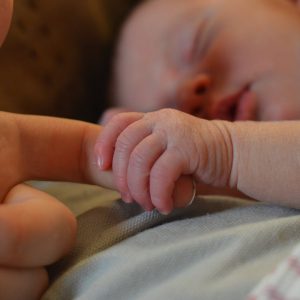 Attachment is the emotional connection you formed as an infant with your primary caregiver, most likely your mother. Though fathers certainly have an essential role in the development of their children, mothers are the centre of the baby’s universe. In order to survive, we have a powerful drive as infants to form emotional bonds with our primary caregiver so they can help us stay alive and to help us feel safe.
Attachment is the emotional connection you formed as an infant with your primary caregiver, most likely your mother. Though fathers certainly have an essential role in the development of their children, mothers are the centre of the baby’s universe. In order to survive, we have a powerful drive as infants to form emotional bonds with our primary caregiver so they can help us stay alive and to help us feel safe.
How do attachment styles set the scene for all relationships?
The quality of the bonding you experienced during this first relationship often determines how well you relate to other people and respond to intimacy throughout life. It is crucial to all aspects of our adult life. Understanding your attachment style can offer important insights as to why you may be having problems in your adult relationships.
What are the different types of attachment?
The way we attach to others can be very easily understood thanks to the research of one man. In the 1940’s, an English psychoanalyst called John Bowlby took elements of his training in psychoanalysis, and incorporated his study of human behaviour to create the so called “Attachment Theory”.
Through much research, Bowlby was able to observe and record similar attachment behavioural patterns in children, depending on how their parent interacted with them. He was a pioneer in being able to prove just how much the quality of the relationship with a primary figure in a child’s life impacts that child’s relationships right into adulthood.
Bowlby discovered three types of attachment: secure, resistant and avoidant. Since his time, resistant has been renamed to anxious attachment, and a new category has been added: disorganised attachment.
As parents we are imperfect. We make mistakes, we get tired, overwhelmed, stressed and worried. No-one has, and no-one can offer, a childhood of purely secure attachment, so if you find yourself starting to feel guilty or inadequate as a parent whilst reading this, please don’t! We are all doing the best we can whilst doing the most important, and toughest, job on the planet.
Secure attachment
A secure attachment is formed when a child has experienced mostly consistent attention to their needs, physically and emotionally. If your primary caretaker made you feel safe and understood, responded to your cries and accurately interpret your needs, then you likely developed a successful, secure attachment.
In the experiments Bowlby conducted, a mother and a child were put in a room together. Mum would then tell the child she was leaving and would be right back. The reaction of the child gave a very clear indication of the attachment type. In a securely attached child, he or she is happy to explore around with mum close by, and when reunited with her after a short absence, is happy to see her or feels comforted quickly if her absence was upsetting. Mum is emotionally attuning to the child so that the child can learn to self-soothe when feeling stressed. Secure attachment can be summed up as following:
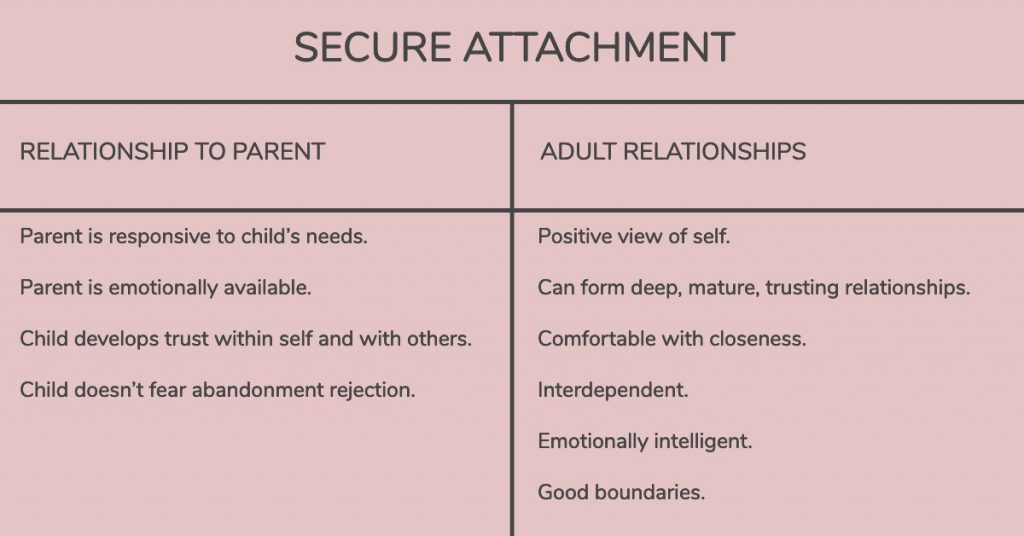
Avoidant attachment
Avoidant attachment can occur when a child does not consistently receive the care and attention that they need to develop a healthy relationship with their caregiver. This may cause a child to hide their feelings and become emotionally distant from their caregiver.
In the experiments Bowlby conducted, after a brief separation from mum, the avoidant child didn’t seek contact with her when reunited and may not even acknowledge her presence back in the room. This indicated mother’s lack of contact and inconsistency in meeting her child’s needs. The avoidantly attached child learns not to approach or seek comfort when distressed, because they have consistently
been ignored, disregarded or invalidated when attempting to get their needs met. These children grow into adults who value independence highly and often won’t seek help. They also have trouble being close in relationships (can’t commit). Avoidant
attachment can be summarised as follows:
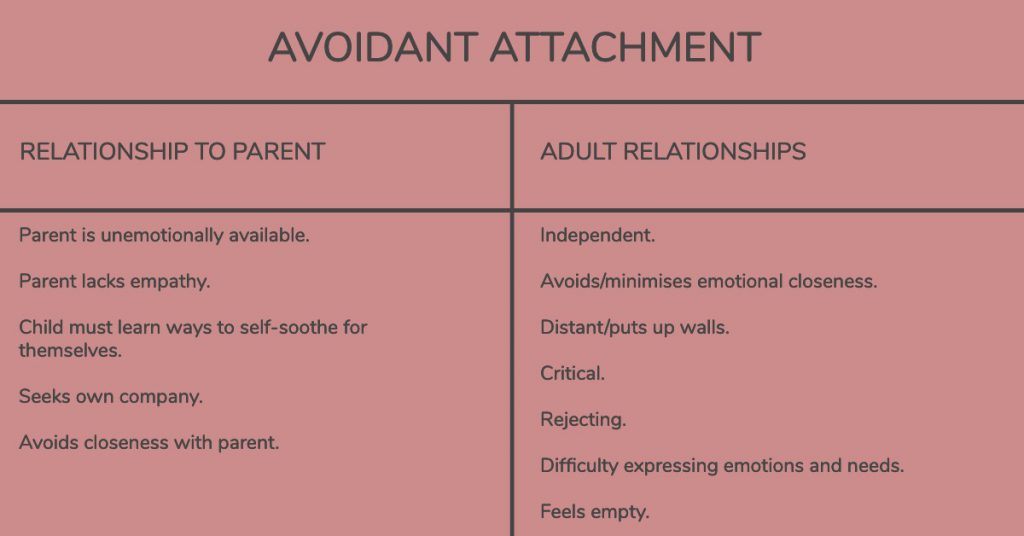
Anxious attachment
Anxious attachment is rooted in a fear of abandonment and an insecurity of being under-appreciated. This attachment style can cause feelings of uncertainty about connections to other people.
In Bowlby’s experiments, he observed a pattern where children with anxious attachment displayed conflict and anger after being separated from their mother. They may seek contact with her but then push away and become angry with confusion, and take much longer to console. This behaviour was a result of parents who are slow in responding to distress in their baby. Leaving the baby to ‘cry it out’ may well produce a child who is more anxious. Inconsistency with emotional attunement can also cause a child to be confused and anxious because they never know what to expect emotionally from their parent. Anxious attachment can be summarised as follows:
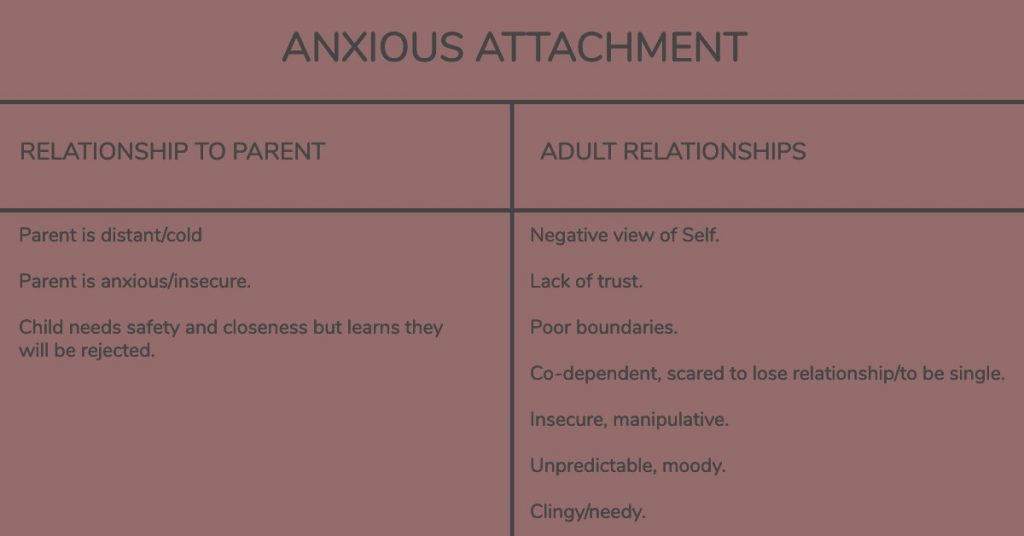
Disorganised attachment
This attachment style is the most chaotic and is the result of being abused in childhood: either physically, emotionally, verbally or sexually. The child has felt consistently extremely unsafe because their primary source of safety becomes one of fear. Either the parent is highly inconsistent in their caregiving, or the child witnesses abuse, substance abuse and violence in the family home. These children grow up with a deep sense of distrust and can be diagnosed in adulthood with complex post traumatic stress. Disorganised attachment can be summarised as:
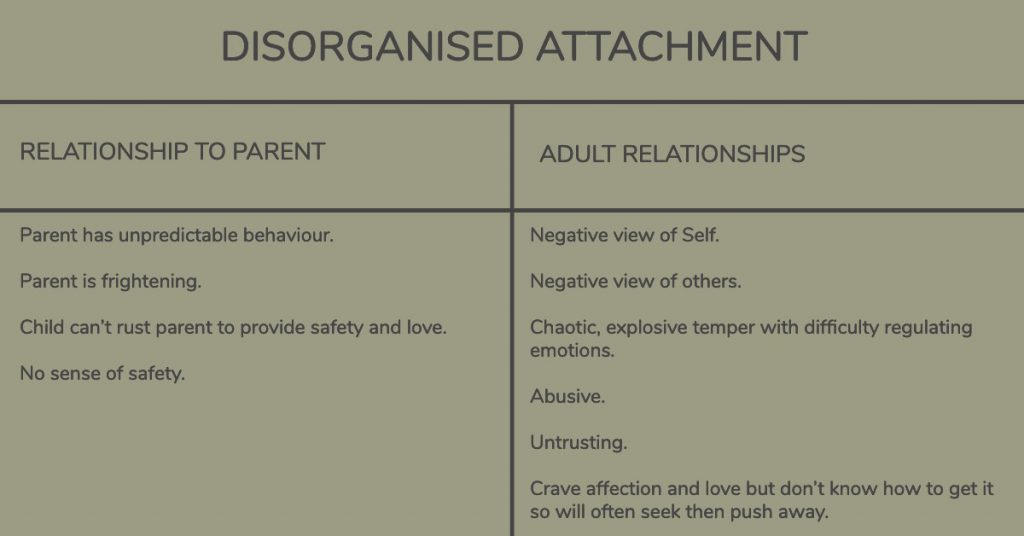
What can I do about my attachment style?
You may be able to recognise a mixture of the attachment traits within yourself, and that’s perfectly normal. Having awareness of your own traits is the crucial step in healing attachment issues and preventing them from being passed to future generations.
It is possible to change and you can develop a more secure attachment style as an adult. Therapy can be invaluable and a therapist experienced in attachment theory can help with this.
Kate is an experienced holistic counsellor and has a passion for transforming traumatic experiences and distress into peace and purpose. Working with her can help you make sense of your past emotional experience and make you feel more secure.
 How can I contact Kate?
How can I contact Kate?
Kate works from her beautiful rooms in Bella Vista (NSW). You can visit Kate’s website here or contact her on 0434 515 463.

